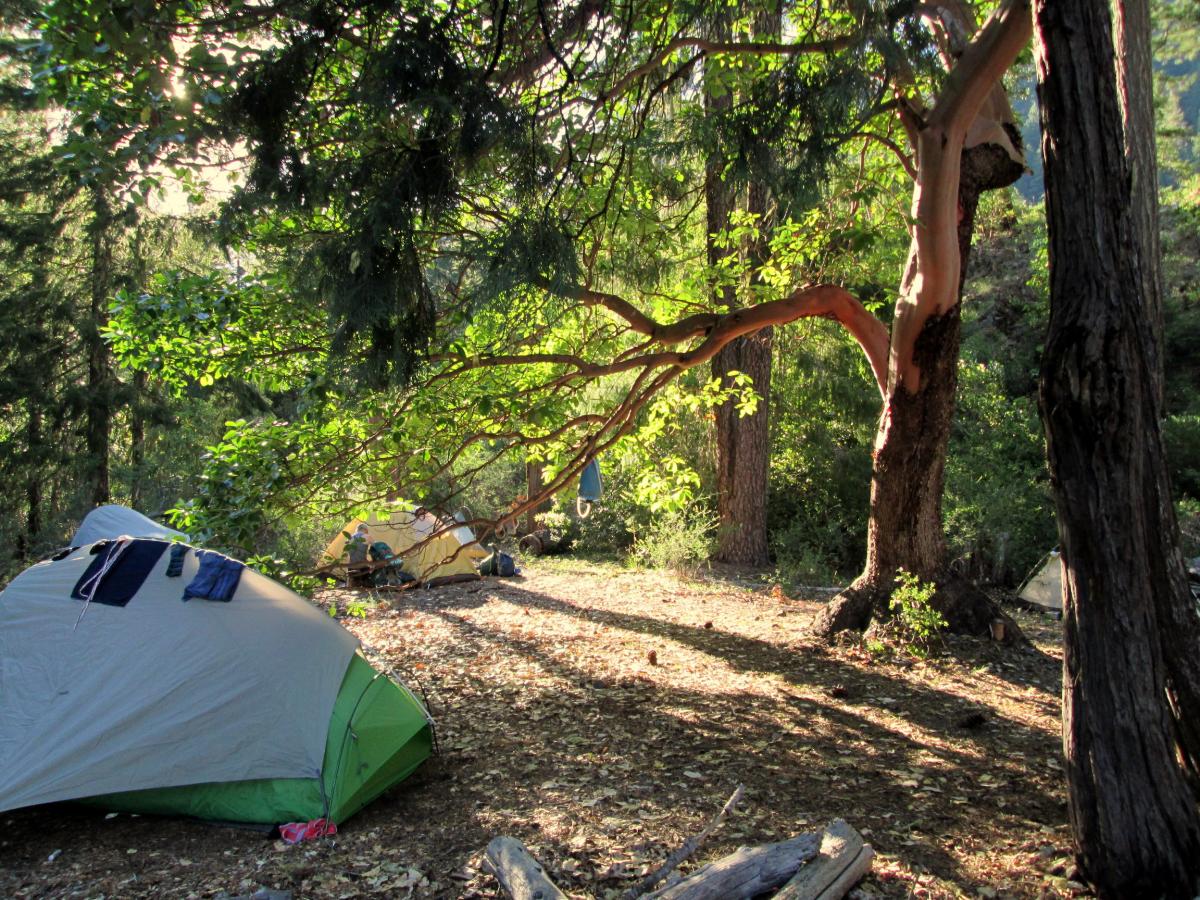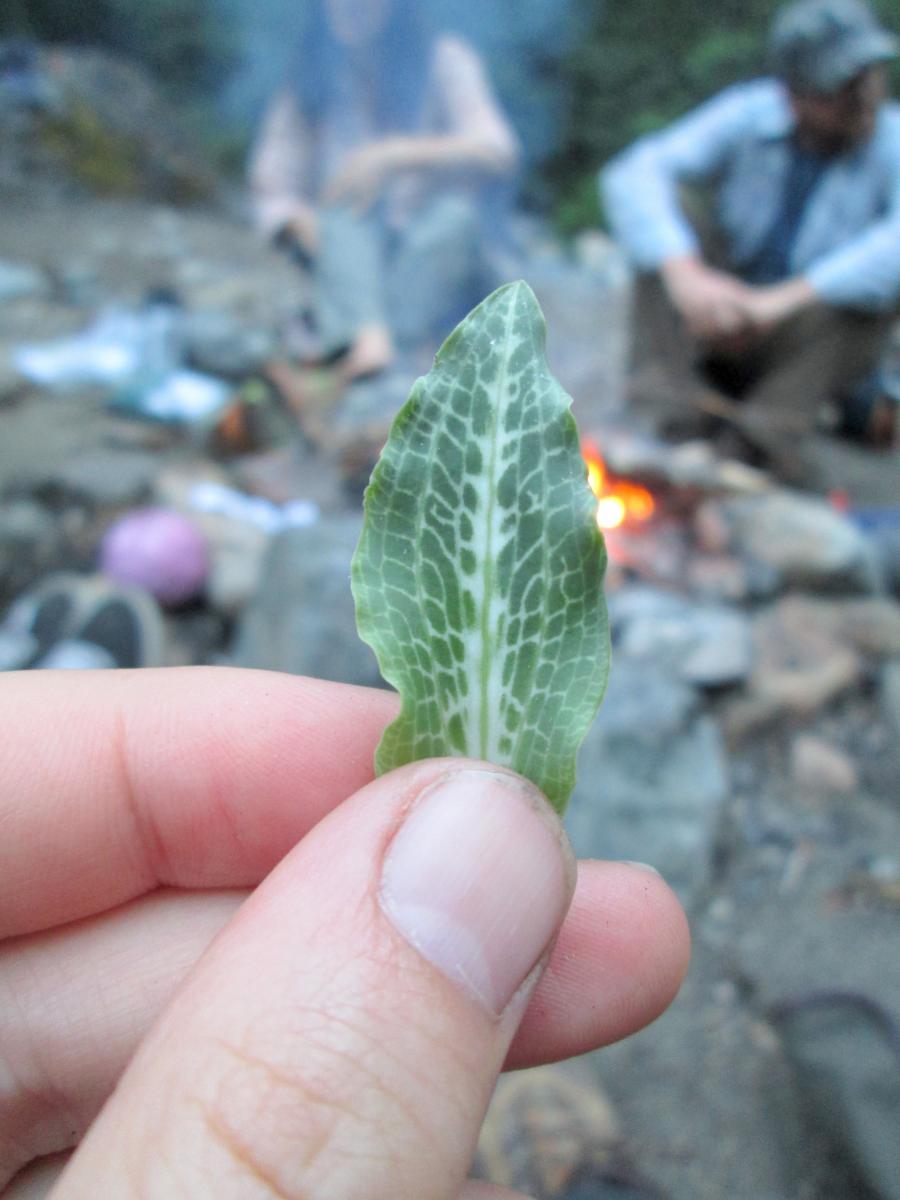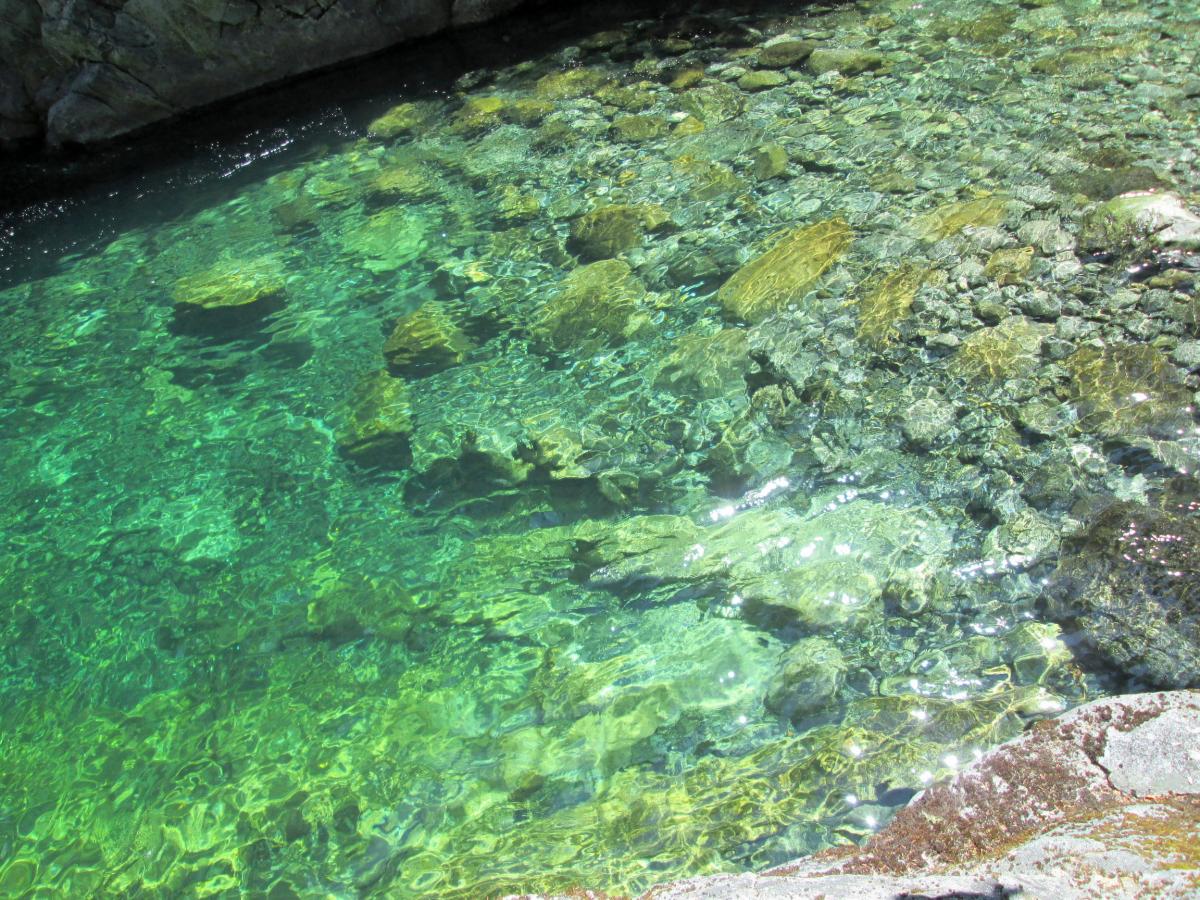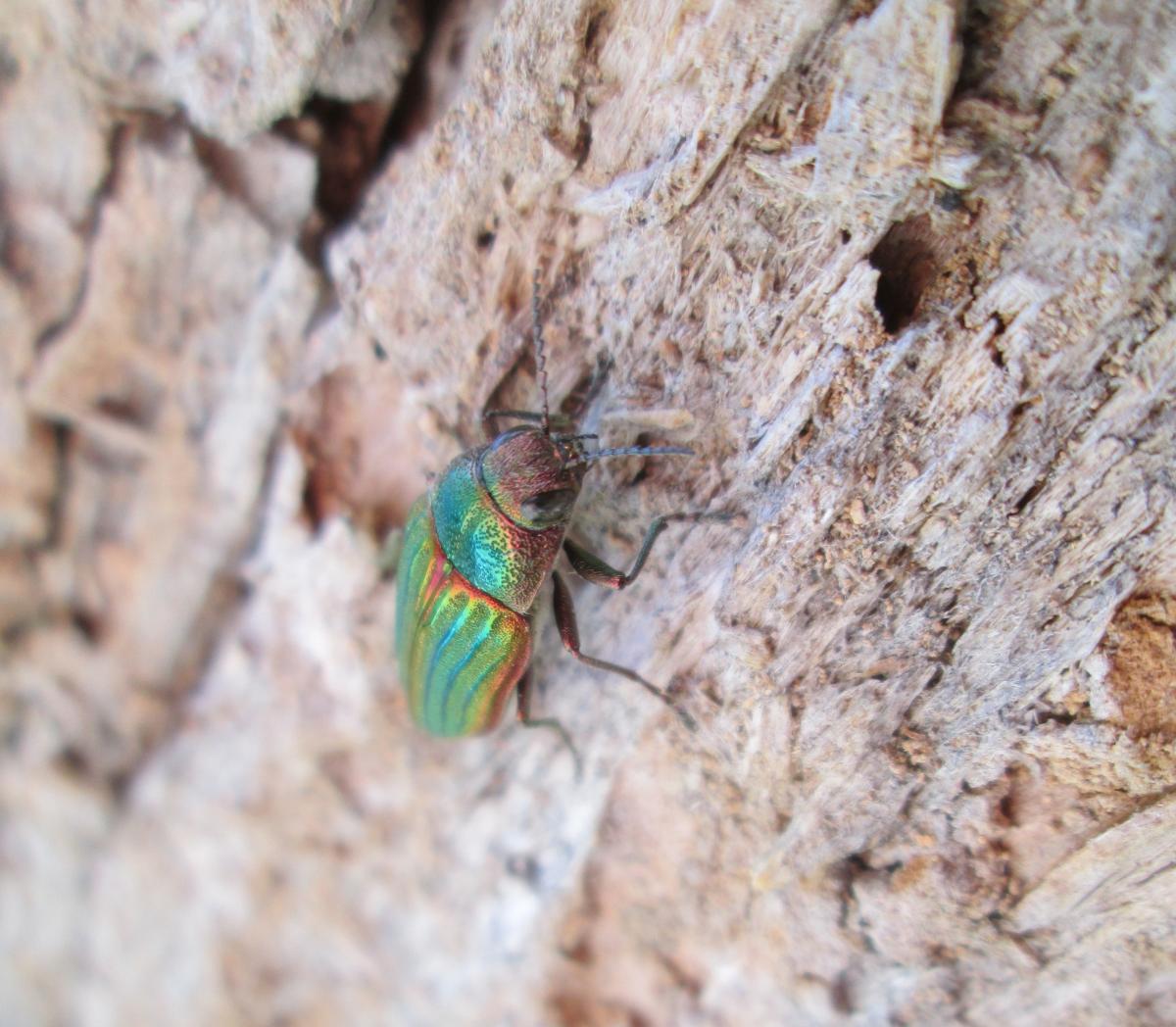As Snow Baby II creaks and rumbles up the narrow dirt road leading to the Clear Creek trailhead, Audie names the plants we pass in order to distract herself and us from the sheer drop to our left.
Madrone Tree. Thimbleberry. Sugar pine.
When we go over a bump, our packs, strapped to Snow Baby’s roof, groan like they’re trying to pull the van in two, and though I trust our guide and driver to deliver us to the trailhead safely, I can’t help but grip the seat in front of me. I try to memorize the names of the plants as Audie points them out, but in the moment the words won’t stick. They slip through my mind like water through a drain.
Pacific yew. Weeping pine. Usnea.
![]()
Two days ago, I flew from Tucson to Portland to meet a group of ten strangers. All I knew about them was that they were artists who were passionate, or at least curious, about the natural world. We were part of the Signal Fire: Wide Open Studios backpacking trip into the Klamath region of southern Oregon and northern California. We would spend the next week backpacking and camping in the Siskiyou Mountains, pumping drinking water from creeks, pitching tents under towering pines, and scouring the trail for rattlesnakes. On its website, Signal Fire describes itself as a nonprofit that “builds the cultural value of the natural world by connecting artists to our remaining wild places.” I was anxious for the adventure to begin. For months, I’d dreamt in my desert home of sleeping under the stars, journaling next to a campfire, and discussing art creek-side with other nature lovers. But as Audie points to the plants on the side of the road—with confidence, with joy and precision—I realize how little I know about this land I am about to immerse myself in.
For most of my life, I’ve identified myself as being outdoorsy. I’ve prided myself in being someone who will scoop a bug out of the tub and release it outside without flinching. Someone who knows how to start a fire using birch bark. Someone who will slow the car to admire a red-tailed hawk spinning through the sky. My short story collection, Our Dreams Might Align, published by Jellyfish Highway Press in 2016, was largely inspired and driven by the natural world: Komodo dragons, whale migrations, the Sonoran Desert. Yet here I find myself: a writer in the woods without words.
Tree, bush, flower, moss, I think to myself, looking out the window.
I ask Audie to repeat the names of the plants we’ve seen so I can write them down in my journal.
I write: Usnea is part plant, part something else. Usnea can be an indicator of how clean air is, as it is highly sensitive to air pollution. Usnea looks like an old man’s beard.
I write: Madrone trees naturally shed their bark. It’s okay that they do this. As they shed, they reveal a satiny, soft pink or green skin. It is cool to the touch.
I whisper usnea and madrone to myself until they become a song that sticks in my head.

…
In the backcountry, miles away from Snow Baby II, I learn to identify poison oak. I learn to identify branches strong and high enough that they’ll hold bags of food out of the reach of black bears. I learn to identify the call of the thrush. I learn to identify caddisflies camouflaged by pine needles. I feel my vocabulary slowly expanding, and with it my clarity of vision. I feel like I’ve spent my whole life looking through a pair of unfocused binoculars, never realizing how much more I would see if I turned the knob just a little bit farther.
Even as my vocabulary grows, I find myself constantly asking my fellow campers what things are. As we sit around the firepit, making curry in pots balanced over fuel canisters, I ask: What’s that sound? What’s that constellation? What’s this lichen? I thought I had a passion for the wilderness, but here I am confronted by people who have followed that passion farther than I have, who have sat cross-legged in libraries reading books on the minute differences between varieties of lichen, who have saved forests containing rare mushrooms from being cut down.
A lizard scuttles out from under the fire rocks, and someone exclaims, “A blue skink!” Everyone stops what they’re doing to watch it.
One of the other artists plucks a leaf from a tree and rushes to the plant identification book. Then she passes that leaf around so we can all admire its delicate lines.
I’m giddy with the beauty of this place and the knowledge of my fellow artists. I try hard to push down the voice that tells me to be ashamed of my ignorance.

…
After two days of backpacking into the Siskiyou Mountains, our group sets up a basecamp along Clear Creek near Wilderness Falls. The plan is to stay there for two full days before hiking back to civilization. Two days to write, to sketch, to paint, to swim in pools of snowmelt, and heal our blisters and our aching calves.
On my first day at basecamp, I wade up the creek until I find a boulder shaped like a saddle next to some little falls. I set out my Nalgene bottle and my bag of trail mix on the rock behind me. I open my journal and write:
The creek ripples by me.
I stop. I’m unhappy with how lifeless and flat this sentence feels. How many times in literature has ripples been used to describe the movement of water?
I continue: The waterfall thunders.
Again, this sentence feels so inadequate to describe what I feel and smell and see.
I turn to a back page of my notebook. I start a list of all the things a creek can do. I start by listing the clichés, the familiar verbs, to get them out of my system. Runs. Meanders. Babbles. Then I try to get more creative, using verbs that aren’t usually associated with water, or words that aren’t typically used as verbs. The creek muscles. The creek palms. I decide to fill both the front and back of the page before I allow myself to stop. To do this, I must think about the creek in ways I haven’t before. A creek is soft and fluid, but it is also hard and unrelenting. It carves away at rock, and it also rips leaves from branches.
I realize a verb can be a metaphor. If I write, The creek whittles away at the bank, I am comparing the creek to a woodworker. If I say, The creek kneads the bank, I’m not just invoking the way the creek folds and presses, I’m also saying something about the creek’s warmth and purposefulness. The creek, like a baker, is creating through the process of first breaking down.
Over the next few days, making lists of verbs for my surroundings becomes an obsession. As I hike, these lists become a marching song in my head. It is no longer just an exercise in breaking out of familiar language. It becomes a way of seeing, a way of looking more closely and more intently than I have before. Maybe I don’t have the vocabulary for the Siskiyou yet, but I can sharpen my vision through metaphor.

…
A couple days after I return to Tucson, I go on a solo hike in Sabino Canyon. It’s the middle of the week, and the trails are mostly empty. The ground is moist and the cacti are swollen and the air is thick with the recent monsoon rains. My calves are still sore, and I’m grateful that part of the Siskiyou Mountains is still with me, embedded in my muscles.
As I walk, I feel my eyes training on the distant mountain peaks. I feel the flora of the Sonoran Desert dissolving into the singular: cactus. I force myself to focus. I try to name every cactus and tree I pass. Lizards skitter off the path as I walk by, and I take out the identification guide I bought at the park store. I thought there were just a few variations of lizards, but now I’m starting to notice things I hadn’t before. How some lizards’ scales are spiky and sharp, while some are flush with their bodies. How some lizards climb trees when they’re fleeing, while others stay on the ground.
Giving language to the world around me, or even attempting to invent language for it, has brought my world to life. It has given it color and contours. I’ve walked this trail in Sabino Canyon many times before, but today it is new.

Dana Diehl is the author of Our Dreams Might Align (Jellyfish Highway Press, 2016). She earned her BA in Creative Writing from Susquehanna University. She received her MFA in Fiction at Arizona State University. Dana has taught Composition, Creative Writing, and Humanities at Arizona State University, Florence Prison, the National University of Singapore, and BASIS Tucson Primary. Her work has appeared in North American Review, Passages North, Necessary Fiction, and elsewhere. She lives and writes in Tucson.

